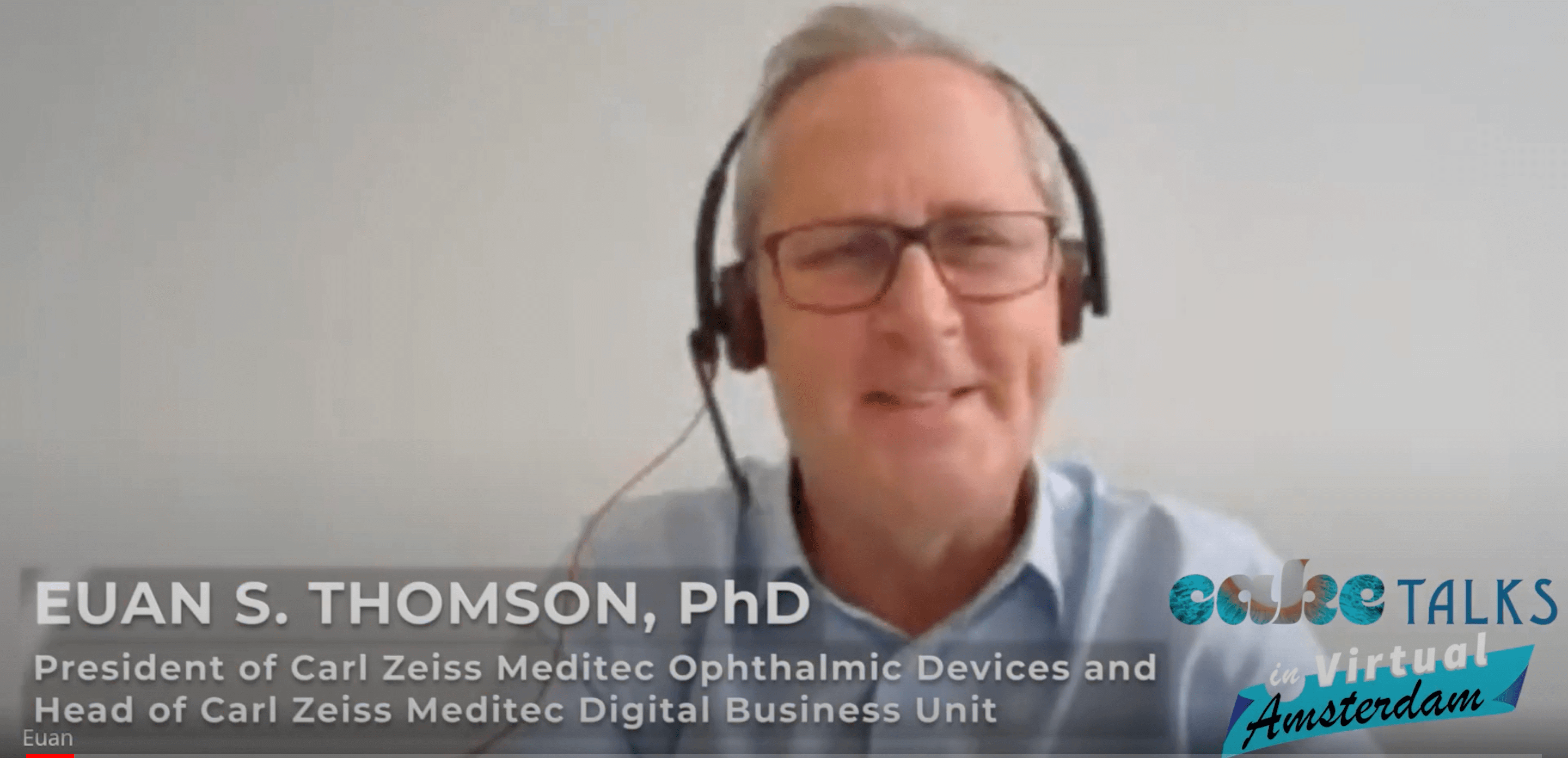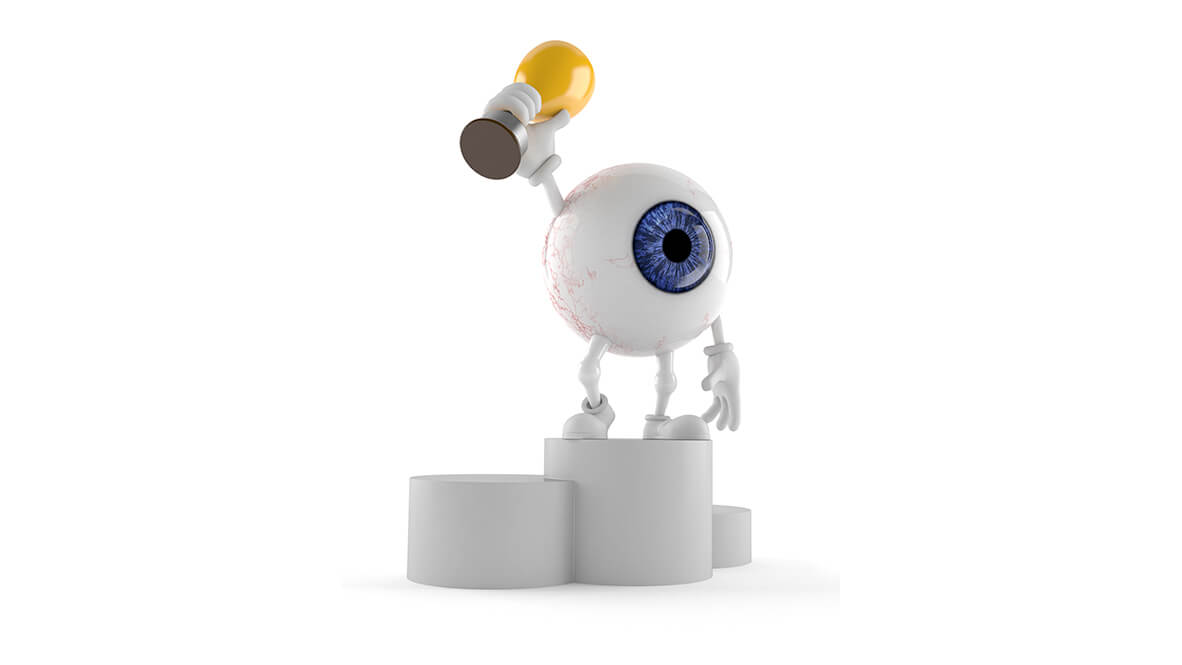During the 38th Congress of the ESCRS and EURETINA Virtual 2020 digital conferences, Media MICE CEO Matt Young had a chance to speak with Euan Thomson, Ph.D., who has stepped in as the global president of ophthalmic devices and head of the digital business unit at Carl Zeiss Meditec. He fills the gap left by the departure of Jim Mazzo, which means he has big shoes to fill — but he appears thoroughly up to the task.
The core point of the discussion was focused on data — what we do with it, how it can help the medical industry, and how best to amalgamate and integrate it into practice. With data playing such a central role in the global economy at large, with massive companies like Google, Facebook, and many others basically being data brokers, it’s no surprise that data’s role in the medical world will continue to grow.
Below are some of the highlights of the discussion, as well as some of this humble writer’s analysis.
Data in Ophthalmology: A Huge Opportunity
The fact that ophthalmology produces so much data leads to a simple conclusion: Harnessing the power of that data can lead to significant advances in treatment options, as well as more informed decisions for doctors.
Actually harnessing that data is far from simple, however, but Thomson and Zeiss are among the most well-prepared to do so.
Just as an example, ophthalmology alone produces hundreds of millions of medical images each year. That’s a massive amount of data from which one can glean insights — potentially valuable insights at that.
Zeiss has three business units: their refractive business unit, their surgical business unit, and their medical instrument business unit. Each produces a significant quantity of data, which is one reason Zeiss is at the forefront of big medical data.
The end goal of gleaning insights from this data is to lead to improved medical treatments and informed medical decisions. So, in contrast to the dubious morality of companies like Google or Facebook, medical data gathering has a relatively pristine moral reputation.
What’s the Point of this Data?

As Thomson put it, “We often rely on a physician’s own experience to be able to make a judgment — but it’s not in many cases truly data-driven.” So, essentially, a lot of important decisions in the medical world are based on a doctor’s intuition. And while that intuition is indeed valuable, when practiced on a large scale it leads to irregularities in the medical world and significant differences in clinical practice.
As Thomson later said with a fair degree of poetic accuracy, “Evidence in the absence of data is opinion.”
Big data is different from clinical trials. Clinical trials are used to prove or disprove a hypothesis; analyzing data, on the other hand, is simply looking for patterns without an established hypothesis. And from these patterns come the all-important insights that can lead to incremental advances or even breakthroughs.
The long-term goal of gathering insights from the massive amount of data produced by the medical world is to help make medicine a more exact science. It’s optimization, plain and simple — figuring out how to make treatments work best for people.
All this data and its uses raises plenty of questions. For example, in many circumstances there may be a treatment that works for 90% of the population but is ineffective or detrimental to the other 10%. Clearly, more data is needed to understand why it’s ineffective and what can be done to improve the situation.
But just how much more data is needed? How do we know when is enough? How do we fill this knowledge gap, especially on the large-scale, meta level?
We may learn the answer to this and similar questions at some point, or we may not. We’re currently in the middle of a data revolution, and it’s often hard to see past the horizon.
How Does Zeiss Help Doctors and Patients?
As evidence has shown and in the words of Thomson, Zeiss is a company focused on the long term. This focus allows them to see and think much further down the road than many other companies, which may be one reason the company has been so long-lived.
Because it’s a long-term, forward-thinking company, Zeiss knows it needs its customers to be healthy, financially and otherwise. So, during the major economic disruptions of the COVID-19 crisis, the company reached out to doctors and clinics everywhere to see how they could help.
Pharmaceutical companies weathered the storm better than many other areas of the industry. Because people still need medicine, and telemedicine allowed doctors to remotely give prescriptions, pharmaceutical sales didn’t drop all that significantly. The medical instrument part of the industry, however, took a big hit. Elective surgeries — even elective surgeries like cataract surgery, which can be life-changing — essentially came to a grinding halt.
Thomson told us the company had spent tens of thousands of hours speaking to their customers, asking the simple central question: “What can we do for you?”
To help, they created digital education programs, outreach programs — and increased connectivity. One such step the company took was to create a website called Med Support Now designed to help clinics get back on their feet. It’s chock full of useful information, resources and more. If you’re part of a clinic, this is a wonderful program that is sure to help. They also donated 100,000 breath shields to help keep doctors and patients safe. Helping feels good, y’know?
Zeiss is also helping doctors share data across clinics — which can be a potential game-changer when it comes to clinical best practices. When doctors have access to far more data than they’ve ever seen before, they’ll be able to make the most informed decisions possible. Thomson’s unit has been helping to demonstrate just how access to all this data can really improve a clinic’s workflow. This, in turn, leads to happier and healthier patients. And isn’t that what the medical industry is supposed to be all about?



